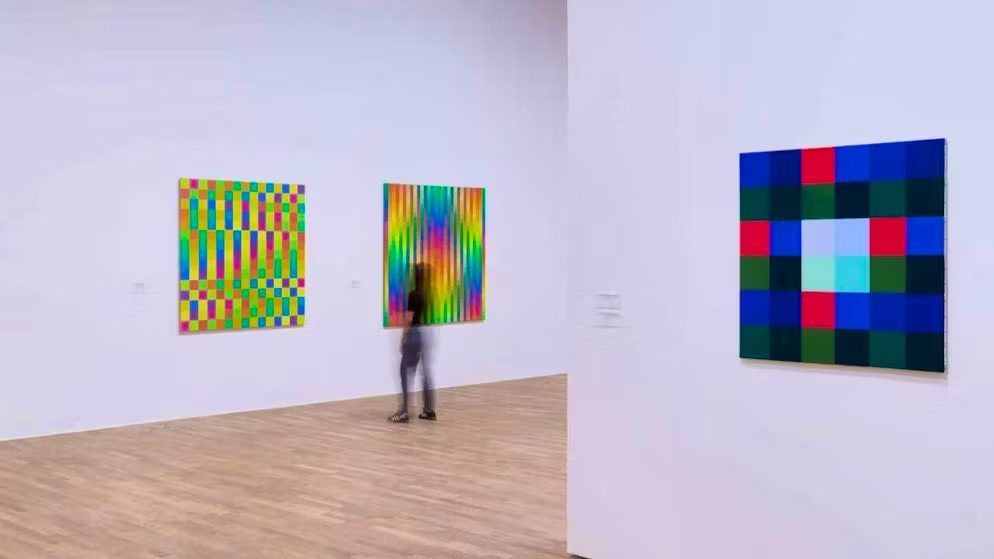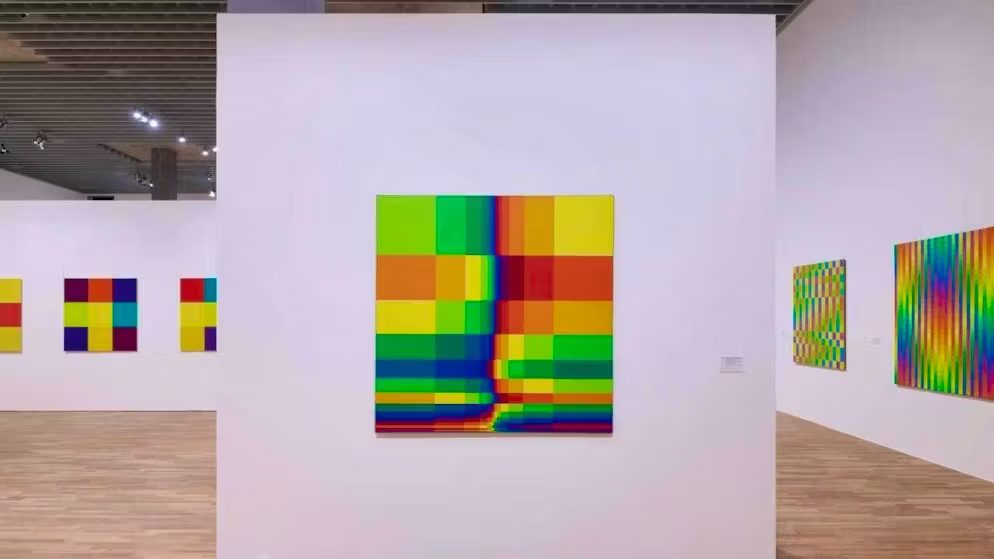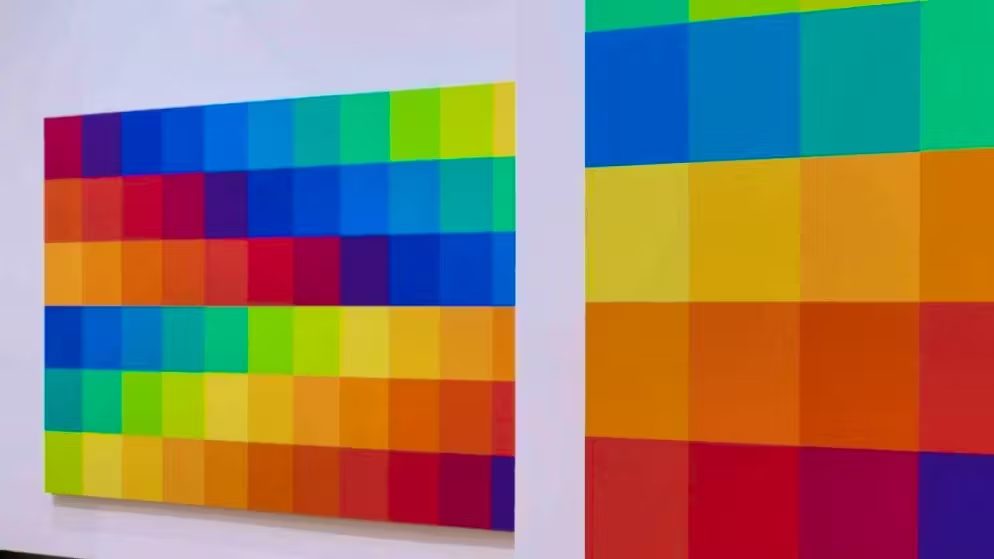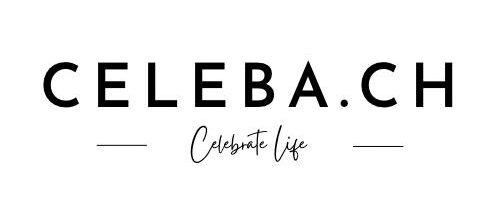
Squares, Lines, and Logic: Lohse’s Retrospective in Ticino
The Art Museum of Italian-speaking Switzerland (MASI) is presenting a major retrospective dedicated to Richard Paul Lohse, co-founder of the “Zurich Concretists”. Following its debut in Lugano, the exhibition will travel to Haus Konstruktiv in Zurich and later to Germany in February.
Thirty-six squares transition from yellow to green, a simple appearance that conceals a meticulously calculated process. According to the exhibition organizers, the “heart” of Richard Paul Lohse’s (1902–1988) creative work was not in execution but in planning. For this reason, his works are dated twice: the first date marks when the artist first recorded an idea as a sketch or note—a detail considered more significant, writes MASI director and co-curator Tobia Bezzola in the exhibition catalog. For example, in Six Vertical Systematic Color Series from Green to Yellow, fourteen years passed between the initial concept in 1955 and its final execution in 1969.

Lohse’s serial-modular paintings draw partly on the principles of the Dutch De Stijl movement, founded in 1917 around Piet Mondrian. “The method represents itself; it is the picture,” Lohse once explained. In 1936, following an exhibition at Kunsthaus Zürich, the “Zürcher Konkreten” school emerged as a loose association of artists. Works by Max Bill, Camille Graeser, Verena Loewensberg, and Lohse shared geometric forms, clear lines, and systematic color compositions. They believed that art possesses its own inherent reality of forms and colors, independent of nature.
In Lohse’s work, precise calculation of geometric forms was fundamental. The Concretists aimed to infuse reason into their art; forms, colors, and lines were meant to be comprehensible. Lohse’s designs, exhibited in Lugano, illustrate how his paintings were intended as an “organization of the surface.”

The exhibition, featuring over 50 works, is organized not strictly chronologically but as an “inner journey,” curator Taisse Grandi Venturi explained at a media conference in Lugano. The journey traces cities where Lohse held major exhibitions: Amsterdam, São Paulo, Venice, Kassel, and New York. Created in collaboration with the Richard Paul Lohse Foundation, Haus Konstruktiv Zurich, the Josef Albers Museum Quadrat Bottrop, and the Wilhelm-Hack-Museum Ludwigshafen, the show spans four decades of the artist’s career.
Lohse was not only a painter but remained committed to graphic design and poster art throughout his life. As Bezzola recounts, he began by chance as a young bicycle courier supporting his single mother, later completing an apprenticeship as an advertising illustrator at Max Dang in Zurich. Until 1960, he produced fewer than ten paintings per year, as painting was only “one part” of his life. It was only in his later years that he felt free to fully realize concepts he had developed earlier—a true form of artistic research realized on canvas.



